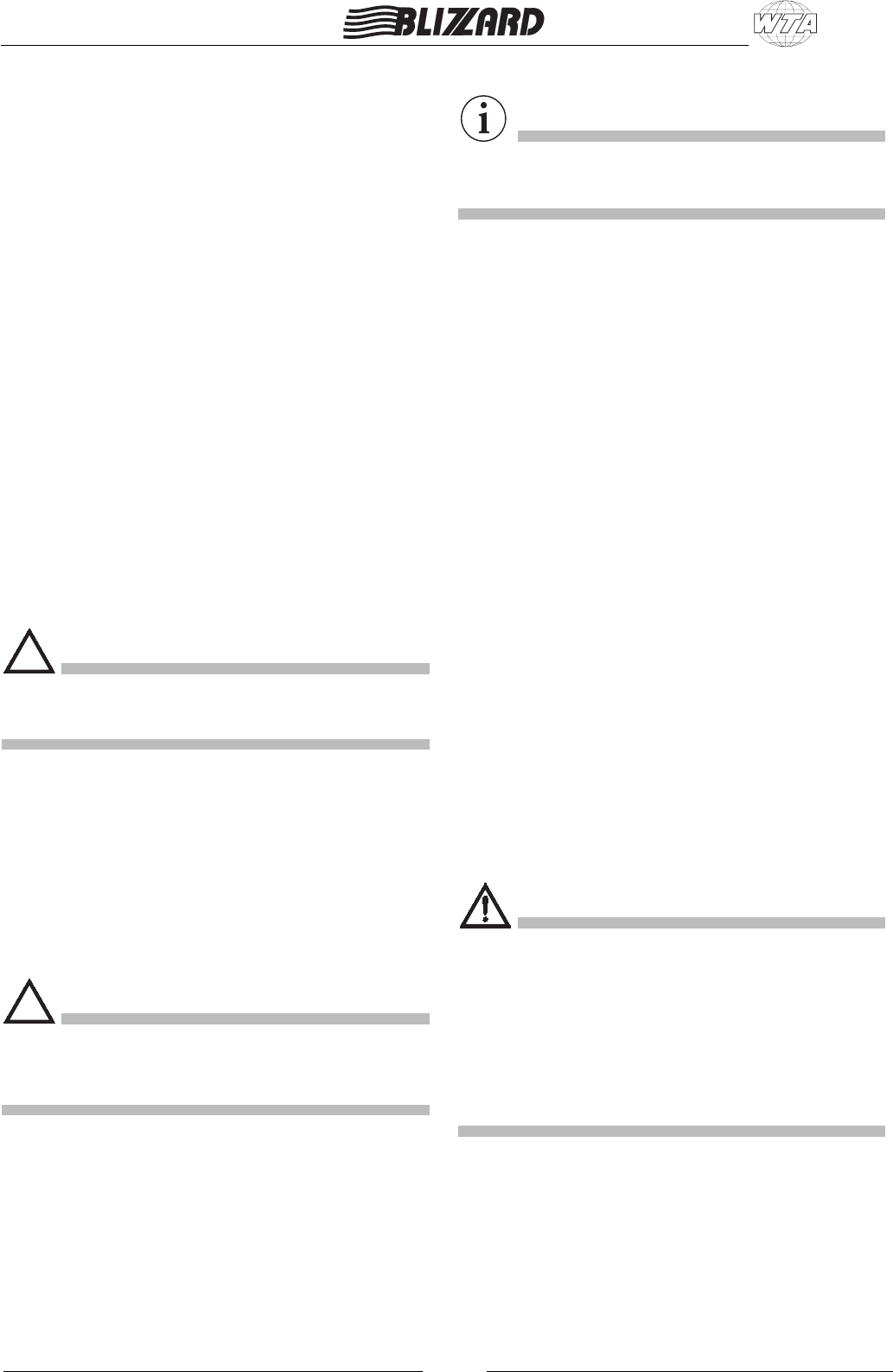
3
FORLI' Italy
or deformation with filler or silicone (fig. 4).
Set the supply mains with 1.5 sqmm section (AC 230V -
50 Hz) close to the roof opening .
Drill a hole on the diffuser surface close to the supply
cables (fig. 5).
Lay the diffuser on the opening centre, paying attention
that the adjusting grate position corresponds to the running
direction (check as well the diffuser correct position from
the vehicle interior).
Apply some silicone around the diffuser and between
diffuser and roof (fig. 6).
Secure the diffuser to the roof by means of the screws
provided, then drill some ø 5 mm holes close to the pre-
arranged seats and apply silicone to the diffuser external
edge.
Fit the self-tapping screw metal stiffeners into their relevant
seats.
Lay the supplied seal around the diffuser edge, paying
attention that the seal joint is opposite to the running
direction (fig. 7).
Connect the wires to the switch by means of the “faston”
provided, and the ground wire by means of a terminal (fig.
8).
CAUTION
Always make sure that cables are not power supplied
before connecting them.
Set the closed air conditioner on the roof. Open the upper
cover and connect the lower part to the previously mounted
diffuser (fig. 9), always taking into account the running
direction.
Connect the diffuser to the air conditioner using the
connectors provided (fig. 10).
Secure the air conditioner to the diffuser by the six
supplied screws (fig. 11).
CAUTION
Secure the base to the vehicle roof using the six
screws shown in fig. 11. The remaining holes must be
free to allow the condensation water to drain out.
Carefully fix the cover (fig. 12)
Make sure that the fan rotates troubleless (fig. 13).
Then fix the frame within the vehicle by using the predrilled
holes as reference point (fig. 14).
3.0 INSTRUCTIONS AND RUNNING
IMPORTANT
The firm does not take any responsability for damages
arising from malfunctionings of the air conditioner.
3.1 AIR CONDITIONER DESCRIPTION AND
RUNNING
The air conditioner consists of an A.C.-power supplied
compressor, which sets the liquid under pressure in a
suitable battery (coil) and heats it. Subsequently the liquid
is conveyed to a second low pressure “battery” where it
expands, absorbs heat and refrigerates the air coming
from the radiator.
Air is conveyed to the vehicle through the special fan at
adjustable speed.
Temperature can be adjusted by the suitable thermostat.
Latter can supply fresh and dehumified air in summer and
warm air in winter (if fitted).
3.2 MACHINE SAFETY
For a safe utilization of the air conditioner, some checks
shall be carried out before switching it on:
• Check that the water trap holes are not clogged.
• Check that voltage and frequence given in the
identification plate comply with the values required by
the local regulations/provisions.
• Check that neither the air inlet nor the air outlet and
circulation inside the ducts and the air inlets are
hindered.
DANGER
• Keep flammable substances like petrol, paints,
solvents, etc. away from the air conditioner.
• Do not touch the air conditioner or its connections
with wet hands.
• Any check of the electric parts shall be made with
engine stopped and by authorized technicians
only.
The air conditioner is manufactured according to the
safety rules given in the Conformity Declaration.













